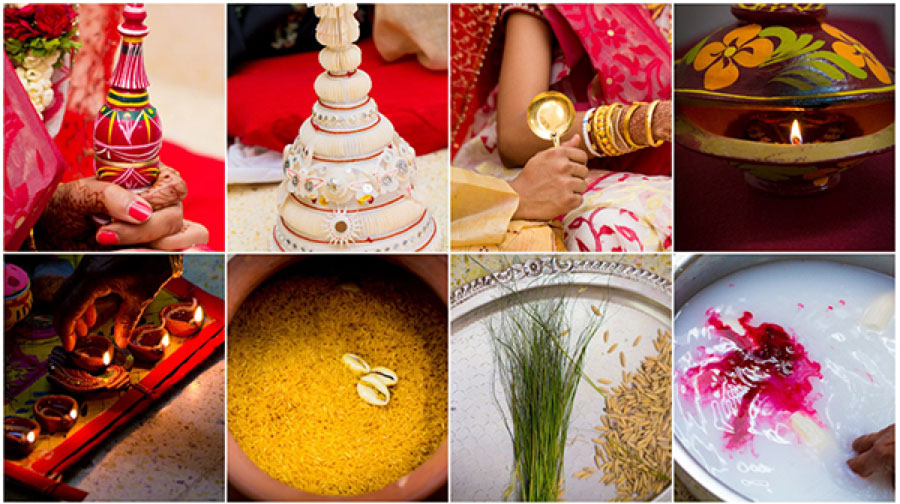
Walking through the beautiful and extravagant rituals of Bengali wedding
A wedding is more than just an opulent ceremony- it is a bonding between two souls. It is a sacred ceremony where two individuals pledge to love each other for the rest of their lives. More than glitz and glamour, the consecrated traditions make this day more exquisite and memorable. Kolkata, India’s cultural capital, has its own marriage customs and rituals dedicated to unite soulmates. In Bengali weddings, rituals are a visual treat owing to the vibrant hues that replete every tradition. Like every Indian wedding, Bengali weddings are primarily different from other Hindu weddings while sharing standard foundations like the Phere and Sindur Daan. From the pre and post-wedding ceremonies, there are so many significant and minor aspects of Bengali wedding rituals that make it outstanding, memorable and picturesque.
The wedding ceremony has many rituals that bring family and friends under one roof, and they celebrate these age-old traditions and customs with a hint of modernity in them. Let us walk through the rituals and their significance in the ceremony.
Adan- Pradan
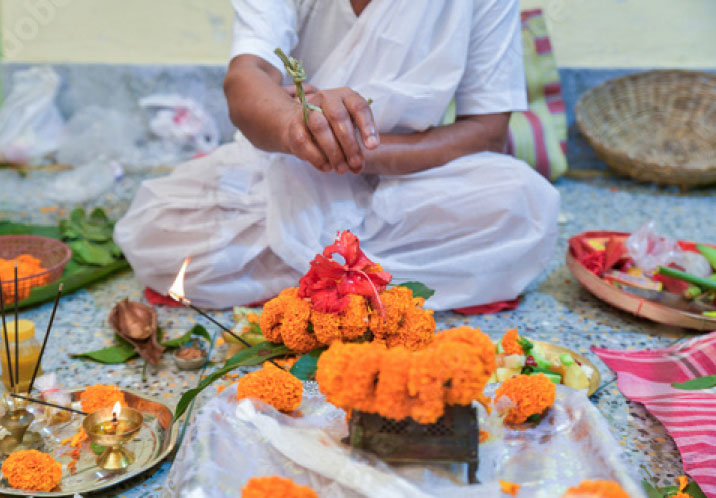
This is the inception of the wedding where two families converge at a place to finalise the date after the bride and groom agree to get married. Nowadays, people generally use Panjika to select the auspicious date and families exchange gifts between them to mark the beginning of the kinship between two families.
Ashirbad
Once the wedding date is set in stone, the next Bengali wedding ritual is Aashirvad. First, the bride and groom meet their in-laws, elders, and extended family to seek blessing before embarking on a new journey together. Then, the relatives shower the couple’s head with husked rice, trefoil leaves and give out gifts, often including precious jewellery, which is seen as a blessing and loving gesture. This ceremony is usually conducted before the wedding, but some couples also do it on the wedding day.Aiburobhat
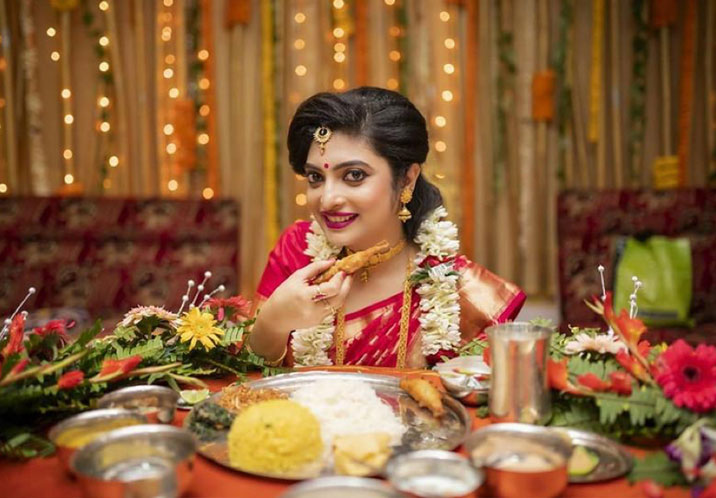
This ritual involves a grand meal comprising delicious traditional Bengali delicacies for the bride and groom. This is considered the last resplendent meal as an unmarried individual. Aiburo means unmarried, and bhaat directly translates to rice. So the literal meaning of the word is ‘the last rice taken by the person while the person is still unmarried’. This is a big fat affair, and this ceremony marks the beginning of a grand affair.
Dodhi Mangal
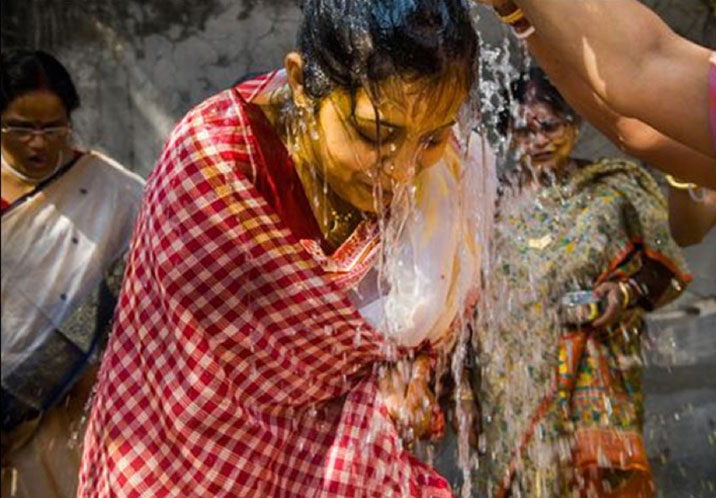
When dawn breaks on the wedding day, family members and relatives of the bride/groom go to a river to fill a pitcher with water to be used during another ceremony called the Snan. Then the couple is fed curd, flattened rice, banana and sweets. This is the only proper meal that the groom and bride will be having till they get married. After that, they are supposed to fast completely except for sweets and water.
Nandi Mukh
On the morning before the wedding, a priest chants Vedic incantations at the bride and groom’s home while the families pay respects and homage to their forefathers. At this small puja, the families pray for the well-being of their ancestors while also seeking their blessings for the bride and groom as they start a new life together.Tatta
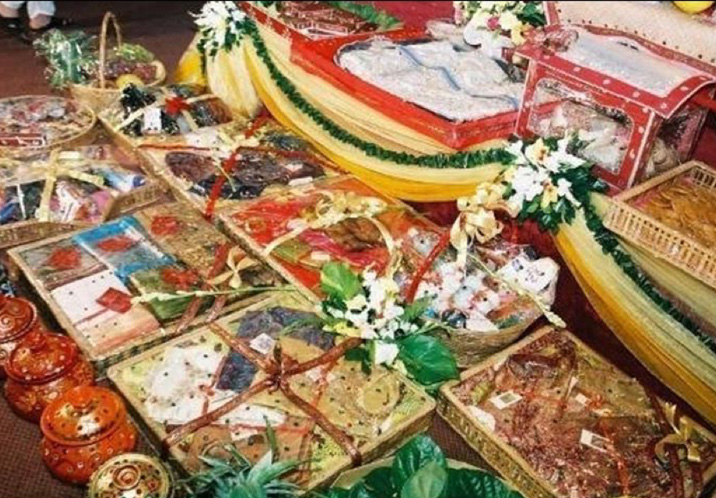
Bengalis exchange various gifts for the wedding, including ethnic clothes, cosmetics, toiletries and accessories for the bride and groom, clothes for the family members, sweets, a whole fish etc. These usually come in beautifully decorated trays. The groom’s family sends these gifts to the bride’s family along with the Haldi. So this is called the ‘gaye holud er tatta’.
Gaye Holud
In the next ritual, called Gaye Holud, the groom's body is slathered with sacred turmeric paste. It is then packed with the tattva gifts and sent to the bride's house, where the friends and relatives will apply the same paste to her body. Finally, the water brought from the river is used for bathing the bride in a ceremony called Snan.Bor Boron
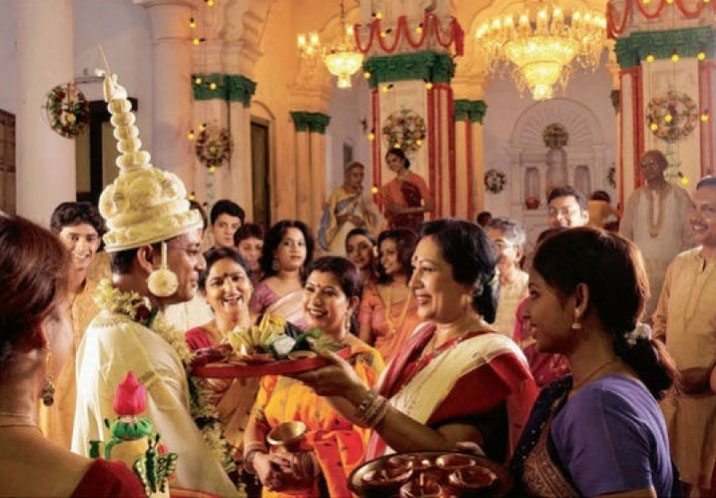
This is the ritual of love and emotion where the bride’s mother blesses the groom and feeds him sweet and water. Then, the groom arrives in a lavishly decorated separate car. Along with the groom, other relatives and friends also arrive at the venue where the final ceremony will occur.
Subho Drishti

Now, the bride is brought to the chhadnatola on a pidi or low wooden stool held by her brothers. First, she circles the groom seven times while covering her face using a betel leaf. Then slowly, she removes the betel leaf away from her face, and the bride and the groom look at each other for the first time on the wedding day.
Sampradan
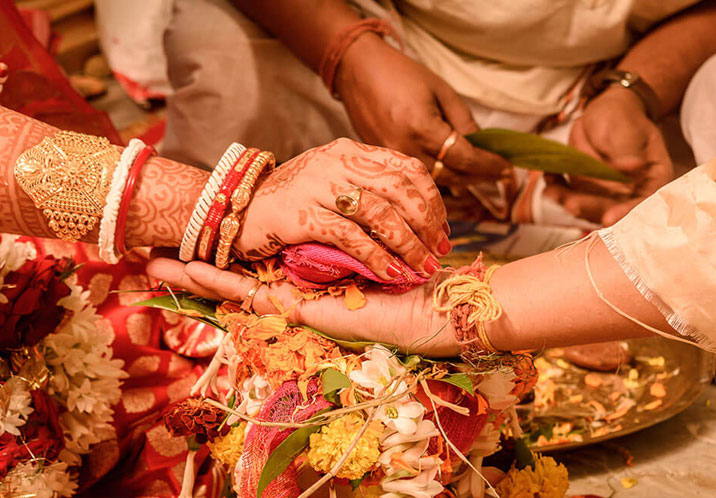
This is a touching and emotional moment where the father gives his daughter’s hand to the groom, signifying that the bride is now given away to her husband. This is the time where Gotra is also changed while the priest is reciting the sacred incantation. But nowadays, many people skip this ritual.
Sindur Daan
Now, at last, we arrive at the end of the wedding, where the groom puts sindoor in the hair parting of the bride that delineates purity and holiness of Hindu matrimony. It is a strong belief that Goddess Parvati will preserve the husband of a married woman and save him from every kind of evil. It is an oblique prayer for the happy and long life of husbands.Hindu wedding is a sacred institution where two love birds start an entirely new journey of life. A new life journey that promises an eternal bond- till death parts them. So the versatile customs and rituals accomplish and strengthen the big day with enough religious and cultural beliefs. Bengali ceremony is filled with rituals making it an extravagant and lavish affair to unite a couple in holy matrimony.